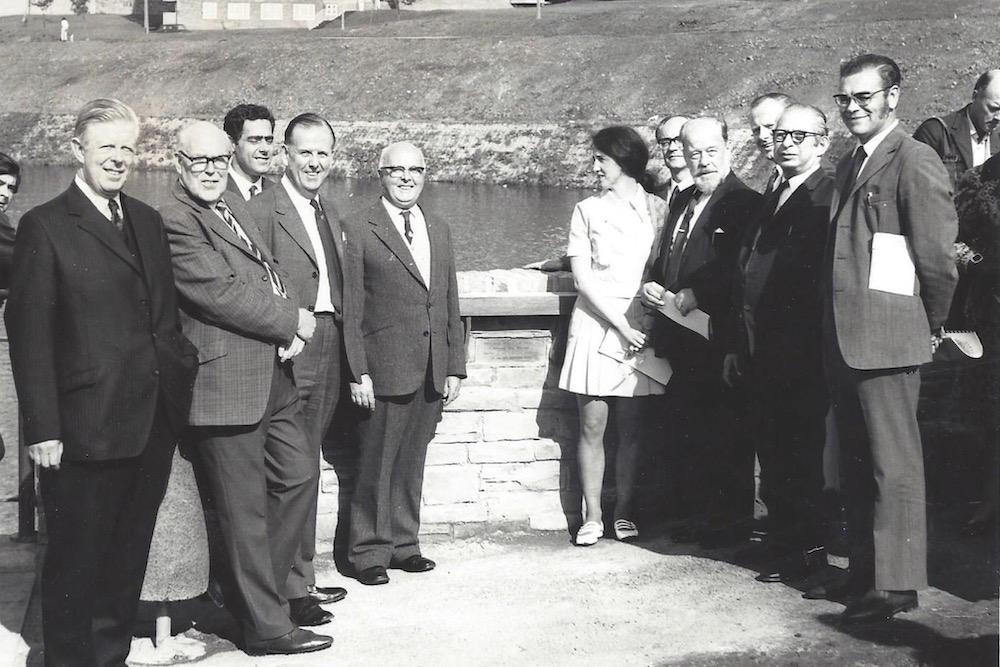
Following the hottest and driest summer on record with frequent pictures on our TVs of empty reservoirs revealing previous villages which had been submerged, there have been calls to re-nationalise our water supply. But water was never a nationalised industry or service.
After the widespread cholera outbreaks in the early nineteenth century, public-spirited men got together and formed corporations to bring clean water to our cities and towns and to take away the sewage and waste.
It was the foundation of Local Government when corporations subsequently set up and ran other services such as Police, Fire Service, Transport, and later, when the 1870 Education Act was passed they were in place to build and staff schools.
Corporations eventually provided all the Health Services outside of hospital walls such as employing District Nurses, the supplying of medical equipment to those requiring it, running the Ambulance Service and lastly, but certainly not least, the provision of public housing after the First World War, referred to as “Corporation houses”.
For very many years, I was the only Leeds City Councillor left who had served as a councillor on the former Leeds Corporation. It was my privilege to be a first woman to serve on the Corporation’s Waterworks Committee and I found it fascinating. (Out of 120 aldermen and councillors there were only 18 women serving on the Corporation.)
The first thing I learnt was that dry summers were not the problem but dry winters. Most of our water for most of the year is taken from rivers. Of course, rivers could not be drained of water and the Corporation had to guarantee a flow of so many gallons. This was done by what I call “a raised plug-hole” – a pipe stuck up in the middle of the flow where water poured down over the pipe’s rim.
If the flow fell below the rim of the pipe then the Corporation took water from its reserved water – its reservoirs. In dry winters, when rivers are low, reserved water is used up when it should be stored for summer use.
Leeds Corporation was very successful in collecting and storing water, so much so, that it sold its surplus water to other councils and industries. It was Leeds ratepayers who had paid for the distribution network and had paid for the building of its great reservoirs situated mainly up the Washburn Valley.
The Corporation owned much land in the Yorkshire Dales, not only the Washburn Valley but also Colsterdale near Masham.
That is why the Leeds Pals were encamped for training in Colsterdale before embarking to France to fight in the First World War as their camp was on Leeds’ land.
The Corporation owned a large house in Colsterdale called “The Bungalow” where the Waterworks Committee stayed each year to see what had been achieved, how its decisions had been acted on and what needed to be done in the future. We saw how water was extracted from the River Burn with the “raised plug-hole” method.
We visited the Washburn Valley where the Corporation’s great reservoirs of Fewston, Swinsty and Thruscross are situated. Leeds had come very near to issuing standpipes in 1959 because of a succession of dry winters and Thruscross was still being built. It had been pointed out to us that the fourth Washburn reservoir, Lindley Wood, had been built by the Corporation, not for drinking water, but to compensate the mills further down the valley with a steady supply of water.
By 1959 the mills had long since gone but it was still illegal for Leeds to use Lindley Wood’s water for drinking. I protested how stupid that was when there was a potential source of water standing idle. The response was, “Don’t worry Love. We went down one dark night and stuck a pipe into it!”
When we visited Thruscross we were taken down into the passage which runs along the inside of the dam wall. In the middle of this passage is a small chamber about half a cubic metre in size, in the middle of which was a plumb line which measured the movement of the dam wall.
The Committee was told that by the end of winter when the reservoir was full, the dam was designed to move 14 inches (35.5cm) because of the weight of water behind it. I asked, “What if it moves more than 14 inches?” expecting to be told that sluices would be opened. The response was, “Run like Hell!”
Being a member of Leeds Corporation Waterworks Committee I found not only was fun but also I derived much satisfaction from the fact that we, as lay people, on a voluntary basis were delivering a service to the people of Leeds for which generations of Leeds people had paid.
This post was wriiten by Elizabeth Nash
Photo: Elizabeth Nash with members and officers of the Waterworks Committee at the opening of the Farnley Balancing Reservoir, situated between Farnley and Wortley, in September 1973. The reservoir was built by the Corporation to prevent flooding downstream during winter but also to ensure a flow in drier summer months.


